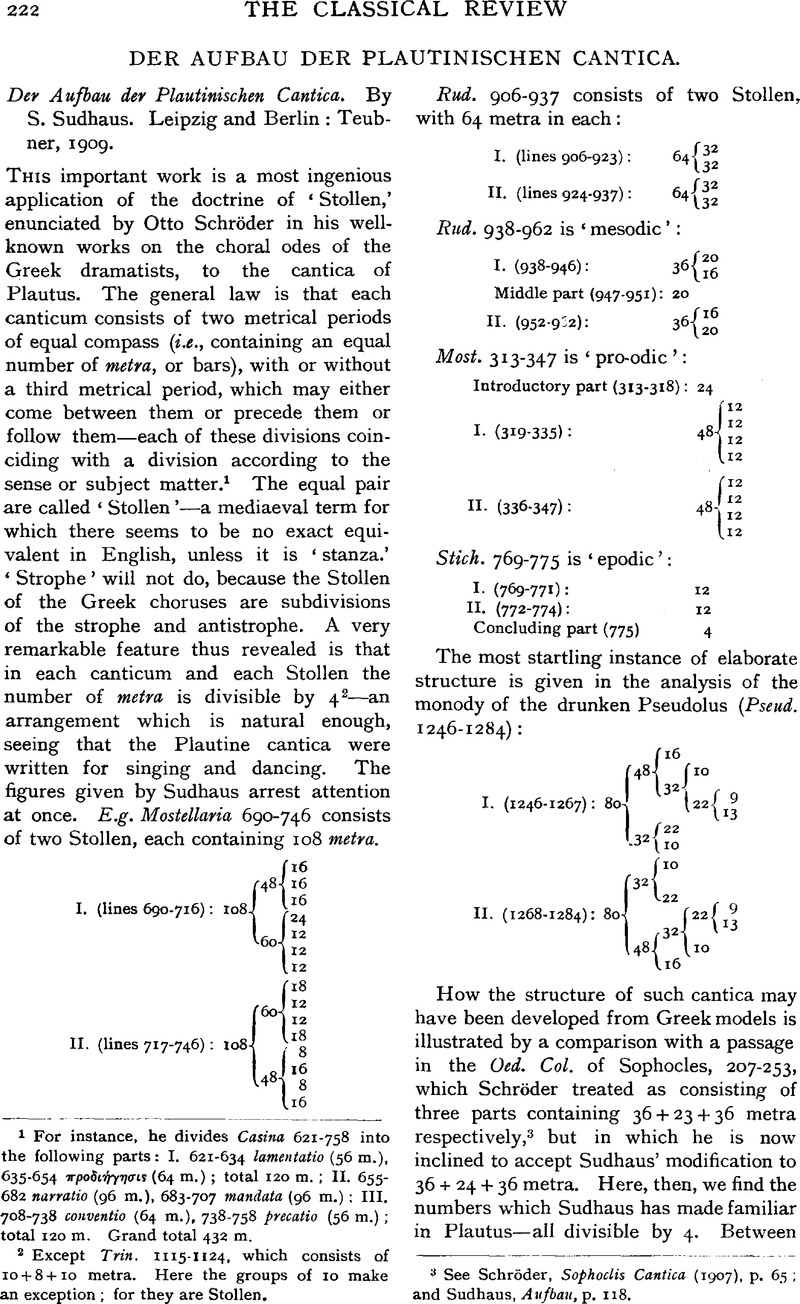No CrossRef data available.
Published online by Cambridge University Press: 27 October 2009

1 For instance, he divides Casina 621–758 into the following parts: I. 621–634 lamentatio (56 m.), 635–654 ![]() (64 m.); total 120 m.; II. 655–682 narratio (96 m.), 683–707 mandata (96 m.): III. 708–738 conventio (64 m.), 738–758 precatio (56 m.); total 120 m. Grand total 432 m.
(64 m.); total 120 m.; II. 655–682 narratio (96 m.), 683–707 mandata (96 m.): III. 708–738 conventio (64 m.), 738–758 precatio (56 m.); total 120 m. Grand total 432 m.
2 Except Trin. 1115–1124, which consists of 10 + 8 + 10 metra. Here the groups of 10 make an exception; for they are Stollen.
3 See Schröder, , Sophoclis Cantica (1907), p. 65Google Scholar; and Sudhaus, , Aufbau, p. 118.Google Scholar
1 Lines 939a, b would then run—
GR. Mitte modo. TR. At pol ego te adiuvabo; nam mea sententia
Bonis quod bene fit haud perit. GR. Turbida tempestas heri fuit.
Or possibly we might retain the et of the MSS. (= also), reading nam et mea sententia, etc. Adiuvabo is the reading of the MSS. and is rightly retained; but I am not sure that Sudhaus is justified in calling the emendation adiuvo (Müller, accepted by most editors) a ‘flagrant Germanism’; cf. Rud. 1040 eo, Most. 261 non do, 577 clamo, 853, 877, etc.
2 In the running scene of the Stichus (274–325) Sudhaus considers that 280–288 (= 32 m.), 290–300 (= 32 m.) and 302–307 (= 24 m.) represent three runs of Pinacium across the stage, the last at a quicker rate and therefore accomplished in fewer metra. But this involves breaking a sentence in the middle. And what becomes of the lines omitted?